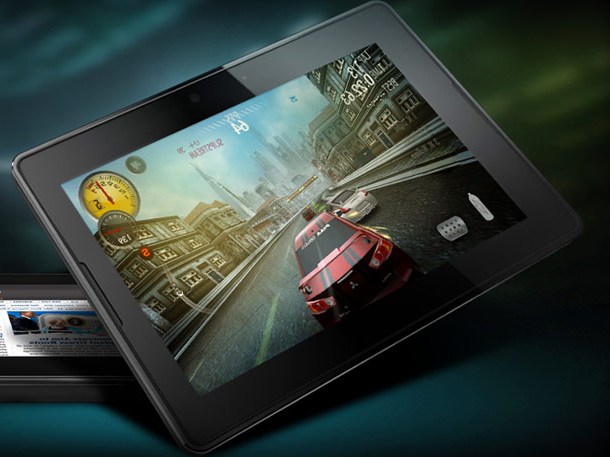RIM Playbook Tablet Has A Slick UI: First Look

We liked the tablet user interface when RIM let us play with the PlayBook at the CES show
Research In Motion hopes its upcoming PlayBook tablet can carve a place for itself in the burgeoning tablet market. It certainly faces some tough competition in that quest, from not only the Apple iPad but also from a growing number of Android-based devices.
But RIM’s 7-inch tablet possesses some distinct advantages, at least based on a few minutes playing with the device at the just-concluded Consumer Electronics Show in Las Vegas. For business users who already own a BlackBerry device, the PlayBook’s tethering abilities offer the prospect of a value-add, at least for those power users who want to sort through their deluge of messages and calendar appointments on a larger screen.
Presumably, RIM will also maintain its high security standards with the device, which could appeal to government users and other danger-minded folks concerned about vulnerabilities in iOS or Android.
Multitasking works well
 At the PlayBook’s heart is a 1GHz dual-core processor paired with 1GB of RAM. While eWEEK wasn’t given nearly enough time to thoroughly test the PlayBook at CES, the device seemed powerful enough to multitask a handful of applications without a stutter, including a game (Quake, which started out a decade ago as a shoot-’em-up for full-size desktops) and Web browsing simultaneously.
At the PlayBook’s heart is a 1GHz dual-core processor paired with 1GB of RAM. While eWEEK wasn’t given nearly enough time to thoroughly test the PlayBook at CES, the device seemed powerful enough to multitask a handful of applications without a stutter, including a game (Quake, which started out a decade ago as a shoot-’em-up for full-size desktops) and Web browsing simultaneously.
The PlayBook offers full HTML5 and Adobe Flash 10.1 support, the latter of which is quickly becoming one of the competitive differentiators by which all other tablet manufacturers try to set their devices apart from the iPad.
Hardware-wise, the device weighs just under a pound and feels comfortable in the hand. The 5 megapixel camera seems better than the ones found in RIM smartphones such as the Blackberry Torch, and the front-facing camera theoretically allows for video conferencing — although it seems that, as with Google and Android, RIM’s executives will leave a lot of the software creation behind that to third-party developers.
Does the QNX OS stand out?
But the PlayBook’s proprietary operating system, based on software acquired during RIM’s takeover of QNX Software Systems from Harman International in April 2010, is what makes the tablet stand out in a sea of Android and iOS rivals.
Like those operating systems, the PlayBook offers users gridlike screens of individual applications. From the home screen, users can swipe their finger through thumbnails of currently running apps, cycle between app categories, and view all those essentials like time and battery life.
Continued on page 2